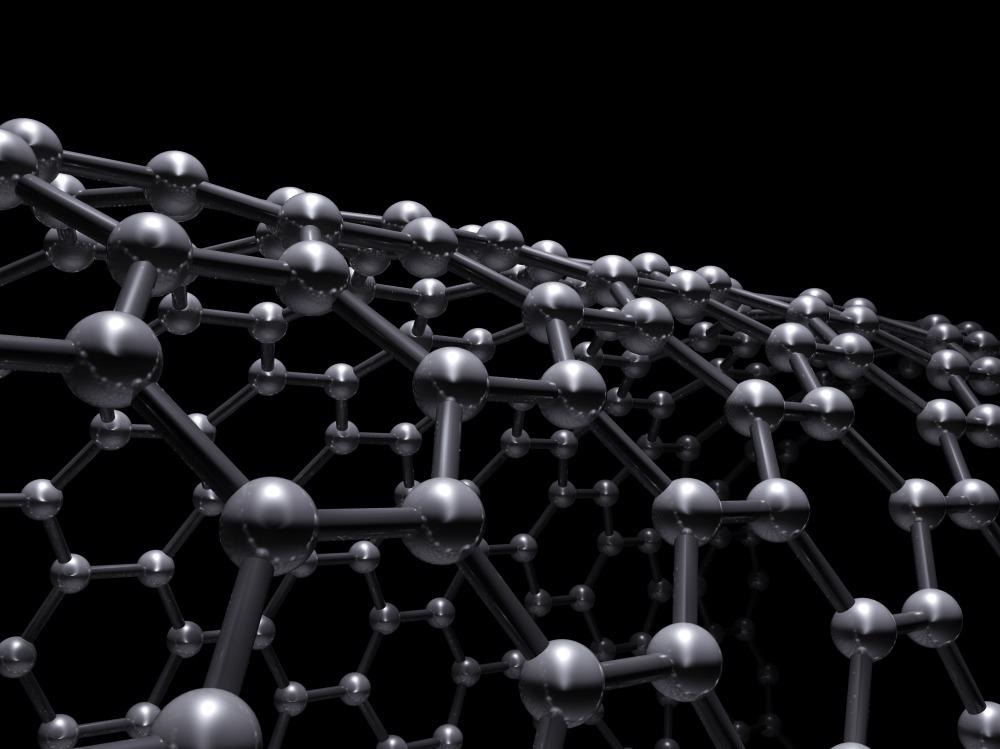Carbon is one of the most abundant elements found in nature, not least because it forms the building blocks of life on Earth. New research in the journal Diamond & Related Materials considers three new super-hard carbon allotropes.

Study: Three new orthorhombic superhard metallic carbon allotropes. Image Credit: Evannovostro/Shutterstock.com
One of carbon’s most fascinating and beneficial characteristics is its capacity to accommodate multiple modes of bonding and its capacity to form up to four bonds with other elements – for example, hydrogen, nitrogen, oxygen, and phosphorus - to create a huge number of different types of molecules.
Most notably, carbon is able to form a number of allotropes, existing in a number of different chemical forms with varying dimensions and a diverse array of practical uses.
Some of the more frequently encountered carbon allotropes include zero-dimensional fullerenes, one-dimensional carbon nanotubes, two-dimensional carbon sheets such as graphene or graphdiyne, and three-dimensional carbon networks.
Each of these different allotropes exhibits specific physical properties and electrical properties. Their hardness can vary significantly, ranging from ultrahard materials such as diamond or to ultrasoft materials such as graphite.
The Samara Carbon Allotrope Database (SACADA) compiles analyses of hundreds of carbon allotropes, categorizing and characterizing these in terms of their conductivity, hardness, insulating and other key properties.
One of the main benefits of this project stems from the importance of being able to predict and theorize the material properties of specific carbon allotropes, empowering researchers and engineers to better optimize and functionalize these in line with the needs of target applications.
For example, super-hard carbon allotropes offer excellent potential for use in electronics applications required to operate in extremely high-pressure environments.
With this in mind, new research presented in the Diamond & Related Materials journal has proposed an improved approach to predicting and developing super-hard carbon allotropes, resulting in the development of a novel P parameter for use in characterizing the hardness of materials with super-hardness and low energy.
The researchers have proposed a total of three super-hard metallic carbon allotropes: Fddd-C96, Ccca-C32, and Ibam-C48. These allotropes were developed via a combination of a random sampling strategy, space-group, and graph-theory (RG2) methods prior to being systematically studied and evaluated.
In this study, graph theory proved an ideal tool due to its usefulness in conceptualizing and analyzing the relationships between molecules and other objects in structures.
This approach involving advanced RG2 code and first-principles calculations has already been widely employed in the generation of crystal structures with specified desired features, including carbon allotropes. The use of first-principles calculations is especially beneficial for this type of study, as these methods allowed the researchers to calculate the allotropes’ physical properties directly based on specific material quantities.
Initial parameters were set to ensure that any predicted structures took the form of orthorhombic crystals with sp2-sp3 hybridization. The presence of sp3 hybridization provides a good indication that an allotrope will likely exhibit high hardness, while the presence of sp2 hybridization offered the potential to afford the allotrope useful conducting channels.
Having confirmed these parameters, the researchers worked to optimize the allotropes’ structures and their related properties through the use of a number of calculations; for example, using density functional theory via the Vienna ab initio Simulation Package (VASP) and performing a generalized gradient approximation in line with the Perdew-Burke-Ernzerhof (PBE) functional.
They also made use of a projector augmented wave method (with a 900 eV cutoff energy) to help calculate the impact of the structural optimization on the allotropes. Uniform k-point meshes were used to sample the Brillouin zone with a reciprocal-space resolution of 0.12 Å−1.
Throughout the study, convergence criteria for total energy and Hellmann–Feynman force components were defined as 1 × 10−5 eV/atom and 1 × 10−3 eV Å−1, respectively. Phonon dispersion curves were calculated using Phonopy - an open-source package designed to perform phonon calculations at harmonic and quasi-harmonic levels.
The finite displacement method was also used, an advanced approach based on Hellman-Feynman forces, first-principles calculations of total energy, and the dynamical matrix. The first-principles molecular dynamics simulations were performed in the canonical (NVT) ensemble using the Nosé thermostat.
In terms of hardness, Fddd-C96 is reported to be ranked third among all super-hard metallic carbon materials in the SACADA.
Hardness calculations for all three structures revealed a hardness greater than 40 GPa, while an investigation into their electrical properties confirmed metallicity as a result of sp2 hybridization; factors that makes these materials excellent candidates for use in electronic devices used in high-pressure environments.
While the development of super-hard metallic carbon allotropes is undoubtedly advantageous and a further step in an important contemporary research area, the impact of the development of innovative means of conceptualizing and characterizing these via a novel parameter, advanced simulations, and calculations is of equal, if not more, importance.
As well as the development and characterization of super-hard metallic materials, this new method also offers the possibility of rapidly screening out ineffective materials when working with significant amounts of potentially unwieldy materials data.
References
Q. Wei, H. Yuan, W. Tong, et al., Three new orthorhombic superhard metallic carbon allotropes, Diamond & Related Materials (2021), https://www.sciencedirect.com/science/article/pii/S0925963521004945?via%3Dihub
Disclaimer: The views expressed here are those of the author expressed in their private capacity and do not necessarily represent the views of AZoM.com Limited T/A AZoNetwork the owner and operator of this website. This disclaimer forms part of the Terms and conditions of use of this website.